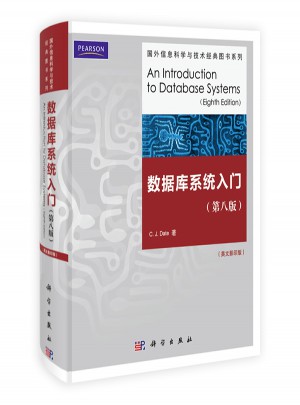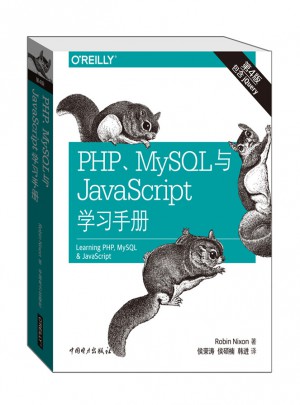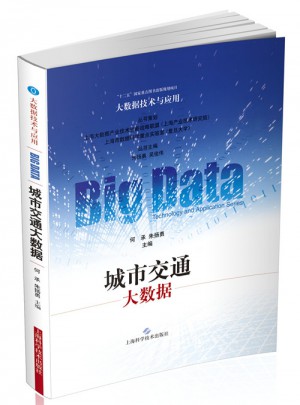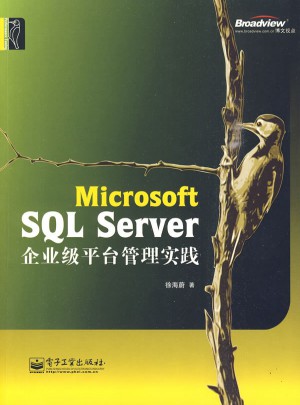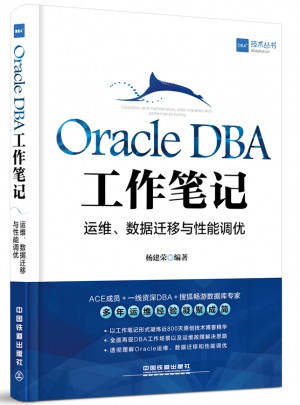Preface to the Eighth Edition
PART I PRELIMINARIES
Chapter 1 An Overview of Database Management
1.1 Introduction
1.2 What Is a Database System?
1.3 What Is a Database?
1.4 Why Database?
1.5 Data Independence
1.6 Relational Systems and Others
1.7 Summary
Exercises
References and Bibliography
Chapter 2 Database System Architecture
2.1 Introduction
2.2 The Three Levels of the Architecture
2.3 The External Level
2.4 The Conceptual Level
2.5 The Internal Level
2.6 Mappings
2.7 The Database Administrator
2.8 The Database Management System
2.9 Data Communications
2.10 Client/Server Architecture
2.11 Utilities
2.12 Distributed Processing
2.13 Summary
Exercises
References and Bibliography
Chapter 3 An Introduction to Relational Databases
3.1 Introduction
3.2 An Informal Look at the Relational Model
3.3 Relations and Relvars
3.4 What Relations Mean
3.5 Optimization
3.6 The Catalog
3.7 Base Relvars and Views
3.8 Transactions
3.9 The Suppliers-and-Parts Database
3.10 Summary
Exercises
References and Bibliography
Chapter 4 An Introduction to SQL
4.1 Introduction
4.2 Overview
4.3 The Catalog
4.4 Views
4.5 Transactlons
4.6 Embedded SQL
4.7 Dynamic SQL and SQL/CLI
4.8 SQL Is Not Perfect
4.9 Summary
Exercises
References and Bibliography
PART II THE RELATIONAL MODEL
Chapter 5 Types
5.1 Introduction
5.2 Values vs.Variables
5.3 Types vs.Representations
5.4 Type Definition
5.5 Operators
5.6 Type Generators
5.7 SQL Facilities
5.8 Summary
Exercises
References and Bibliography
Chapter 6 Relations
6.1 Introduction
6.2 Tuples
6.3 Relation Types
6.4 Relation Values
6.5 Relation Variables
6.6 SQL Facilities
6.7 Summary
Exercises
References and Bibliography
Chapter 7 Relational Algebra
7.1 Introduction
7.2 Closure Revisited
7.3 The Original Algebra:Syntax
7.4 The Original Algebra:Semantics
7.5 Examples
7.6 What Is the Algebra For?
7.7 Further Points
7.8 Additional Operators
7.9 Grouping and Ungrouping
7.10 Summary
Exercises
References and Bibliography
Chapter 8 Relational Calculus
8.1 Introduction
8.2 Tuple Calculus
8.3 Examples
8.4 Calculus vs.Algebra
8.5 Computational Capabilities
8.6 SQL Facilities
8.7 Domain Calculus
8.8 Query-By-Example
8.9 Summary
Exercises
References and Bibliography
Chapter 9 Integrity
9.1 Introduction
9.2 A Closer Look
9.3 Predicates and Propositions
9.4 Relvar Predicates and Database Predicates
9.5 Checking the Constraints
9.6 Internal vs.External Predicates
9.7 Correctness vs.Consistency
9.8 Integrity and Views
9.9 A Constraint Classification Scheme
9.10 Keys
9.11 Triggers(a Digression
9.12 SQL Facilities
9.13 Summary
Exercises
References and Bibliography
Chapter 10 Views
10.1 Introduction
10.2 What Are Views For?
10.3 View Retrievals
10.4 View Updates
10.5 Snapshots(a Digression
10.6 SQL Facilities
10.7 Summary
Exercises
References and Bibliography
PART III DATABASE DESIGN
Chapter 11 Functional Dependencies
11.1 IntrOduction
11.2 Basic Definitions
11.3 Trivial and Nontrivial Dependencies
11.4 Closure of a Set of Dependencies
11.5 Closure of a Set of Attributes
11.6 Irreducible Sets of Dependencies
11.7 Summary
Exercises
References and Bibliography
Chapter 12 Further Normalization I:1NF,2NF,3NF,BCNF
12.1 Introduction
12.2 NOnloss Decomposition and Functional Dependencies
12.3 First,Second,and Third Normal Forms
12.4 Dependency Preservation
12.5 Bovce/Codd Normal Form
12.6 A Note on Relation-Valued Attributes
12.7 Summary
Exercises
References and Bibliograph
Chapter 13 Further Normalization II:Higher Normal Forms
13.1 Introduction
13.2 Multi-valued Dependencies and Fourth Normal Form
13.3 Join Dependencies and Fifth Normal Form
13.4 The Normalization Procedure Summarized
13.5 A Note on Denormalization
13.6 Orthogonal Design(a Digression
13.7 Other Normal Forms
13.8 Summary
Exercises
References and BibliograPhy
Chapter 14 Semantic Modeling
14.1 Introduction
14.2 The Overall Approach
14.3 The E/R Model
14.4 E/R Diagrams
14.5 Database Design with the E/R Model
14.6 A Brief Analysis
14.7 Summary
Exercises
References and Bibliography
PART IV TRANSACTIoN MANAGEMENT
Chapter 15 Recovery
15.1 Introduction
15.2 Trantions
15.3 Transaction Recovery
15.4 System Recovery
15.5 Media Recovery
15.6 TwO-Phase Commit
15.7 Savepoints(a Digression
15.8 SQL Facilities
15.9 Summary
Exercises
References and Bibliography
Chapter 16 Concurrency
16.1 Introduction
16.2 Three Concurrency Problems
16.3 Locking
16.4 The Three Concurrency Problems Revisited
16.5 Deadlock
16.6 Serializabilitv
16.7 Recovery Revisited
16.8 Isolation Levels
16.9 Intent Locking
16.10 Dropping ACID
16.11 SQL Facilities
16.12 Summary
Exercises
References and Bibliography
PART V FURTHER TOPICS
Chapter 17 Security
17.1 Introduction
17.2 Discretionary Access Control
17.3 Mandatory Access Control
17.4 Statistical Databases
17.5 Data Encryption
17.6 SQL Facilities
17.7 Summary
Exercises
Reterences and Bibliography
Chapter 18 Optimization
18.1 Introduction
18.2 A Motivating Example
18.3 An Overview of Query Processing
18.4 Expressic Transformation
18.5 Database Statistics
18.6 A Divide-and-Conquer Strategy
18.7 Implementing the Relational Operators
18.9 Summary
Exerclses
References and Bibliography
Chapter 19 Missing Information
19.1 Introduction
19.2 An Overview of the 3VL Approach
19.3 Some Consequences of the Foregoing Scheme
19.4 Nulls and Keys
19.5 Outer Join(a Digression
19.6 Special Values
19.7 SQL Facilities
19.8 Summary
Exercises
References and Bibliography
Chapter 20 Typ e Inheritance
20.1 Introduction
20.2 Type Hierarchies
20.3 Polymorphism and Substitutabilitv
20.4 Variables and Assignments
20.5 Specialization by Constraint
20.6 Compansons
20.7 Operators,Versions,and Signatures
20.8 Is a Circle an Ellipse?
20.9 Specialization by Constraint Revisited
20.10 SQL Facilities
20.11 Summary
Exercises
References and Bibliography
Chapter 21 Distributed Databases
21.1 Introduction
21.2 Some Preliminaries
21.3 The Twelve Objectives
21.4 Problems of Distributed systems
21.5 Client/Server Systems
2 1.6 DBMS Independence
21.7 SQL Facilities
21.8 Summary
Exercises
References and Bibliography
Chapter 22 Decision Support
22.1 Introduction
22.2 Aspects of Decision Support
22.3 Database Design for Decision Support
22.4 Data Preparation
22.5 Data Warehouses and Data Marts
22.6 Online Analytical Processing
22.7 Data Mining
22.8 SQL Facilities
22.9 Summary
Exercises
References and Bibliography
Chapter 23 Temporal Databases
23.1 Introduction
23.2 What Is the Problem?
23.3 Intervals
23.4 Packing and Unpacking Relations
23.5 Generalizing the Relational Operators
23.6 Database Design
23.7 Integrity Constraints
23.8 Summary
Exercises
References and Bibliography
Chapter 24 Logic-Based Databases
24.1 Introduction
24.2 Overview
24.3 Propositional Calculus
24.4 Predicate Calculus
24.5 A Proof-Theoretic View of Databases
24.6 Deductive Database Systems
24.7 Recursive Query Processing
24.8 Summary
Exercises
References and Bibliography
PART VI OBJECTS,RELATIONS,AND XML
Chapter 25 Object Databases
25.1 Introduction
25 12 Objects,Classes,Methods,and Messages
25.3 A Closer Look
25.4 A Cradle-to-Grave Example
25.5 Miscellaneous Issues
25.6 Summary
Exercises
References and Bibliography
Chapter 26 object/Relational Databases
26.1 Introduction
26.2 The First Great Blunder
26.3 The Second Great Blunder
26.4 Implementation Issues
26.5 Benefits of True Rapprochement
26.7 SQL Facilities
Summary
Exercises
References and Bibliography
Chapter 27 The World Wide Web and XML
27.1 IntrOduction
27.2 The Web and the Internet
27.3 An Overview of XML
27.4 XML Data Definition
27.5 XML Data Manipulation
27.6 XML and Databases
27.7 SQL Facilities
27.8 Summary
Exercises
References and Bibliography
APPENDIXES
Appendix A The TransRelationalTM Model
A.1 Introduction
A.2 Three Levels of Abstraction
A.3 The Basic Idea
A.4 Condensed Columns
A.5 Merred Columns
A.6 Implementing the Relational Operators
A.7 Summary
References and Bibliography
Appendix B SQL Expressions
B.1 Introduction
B.
